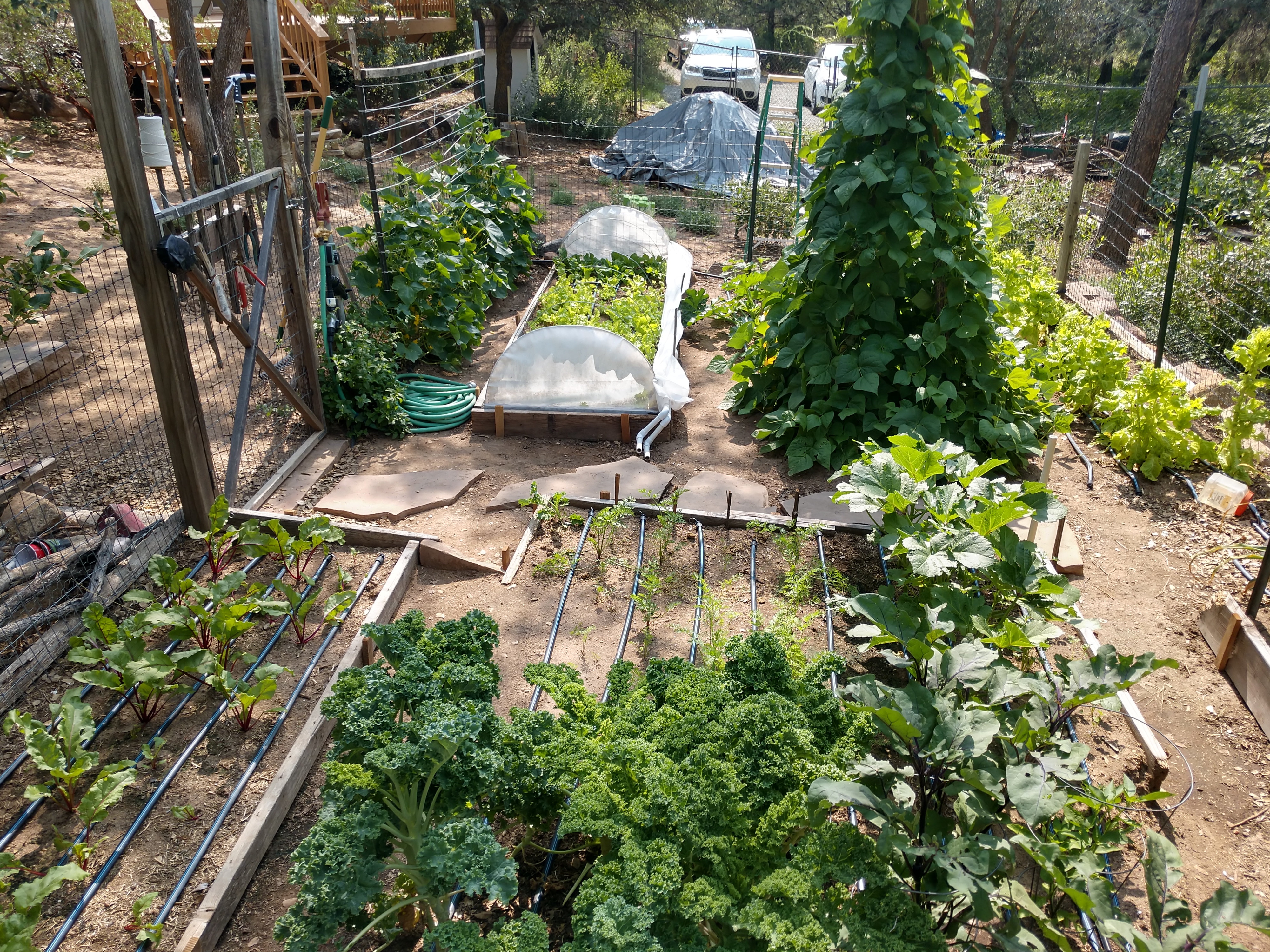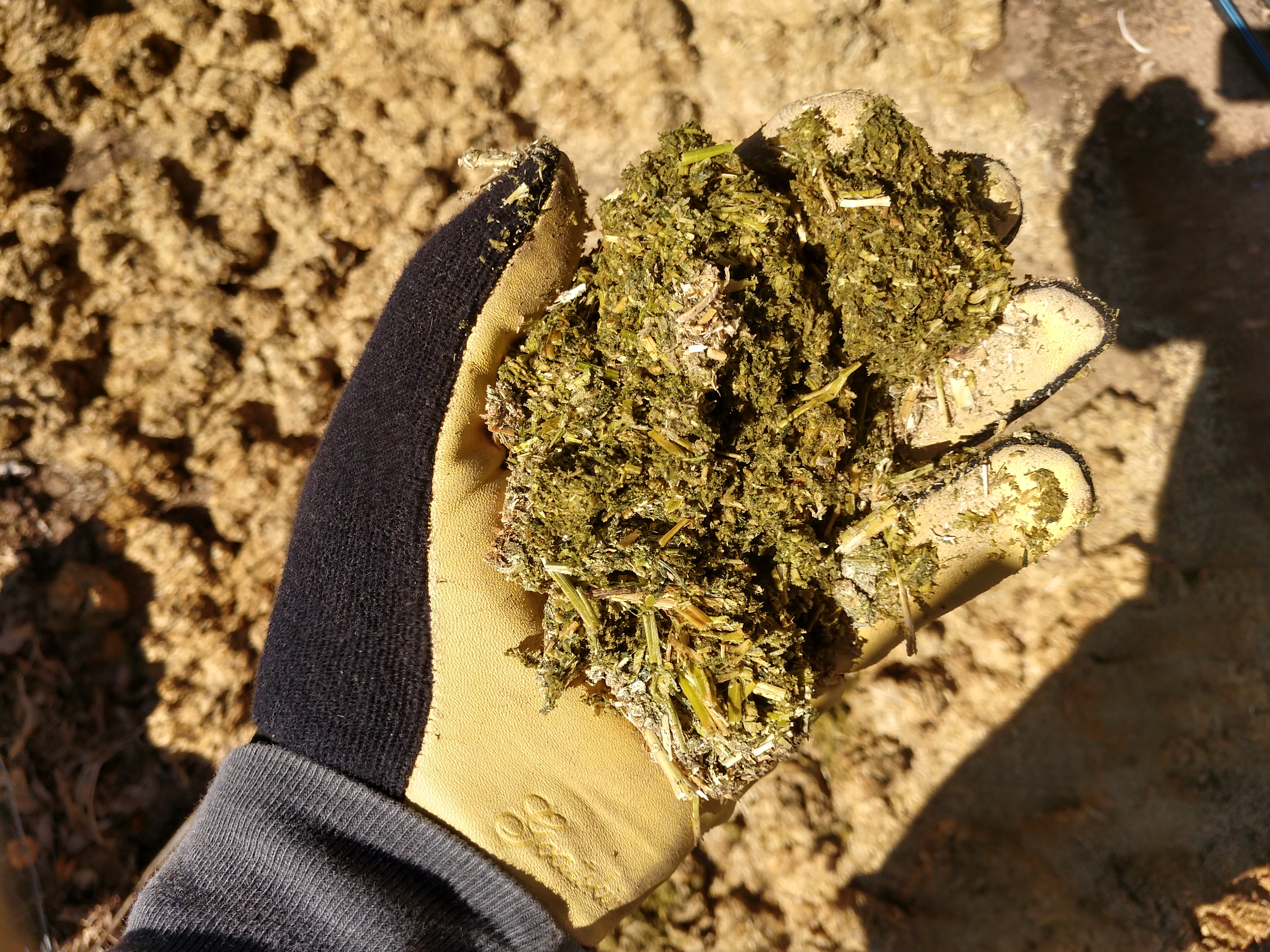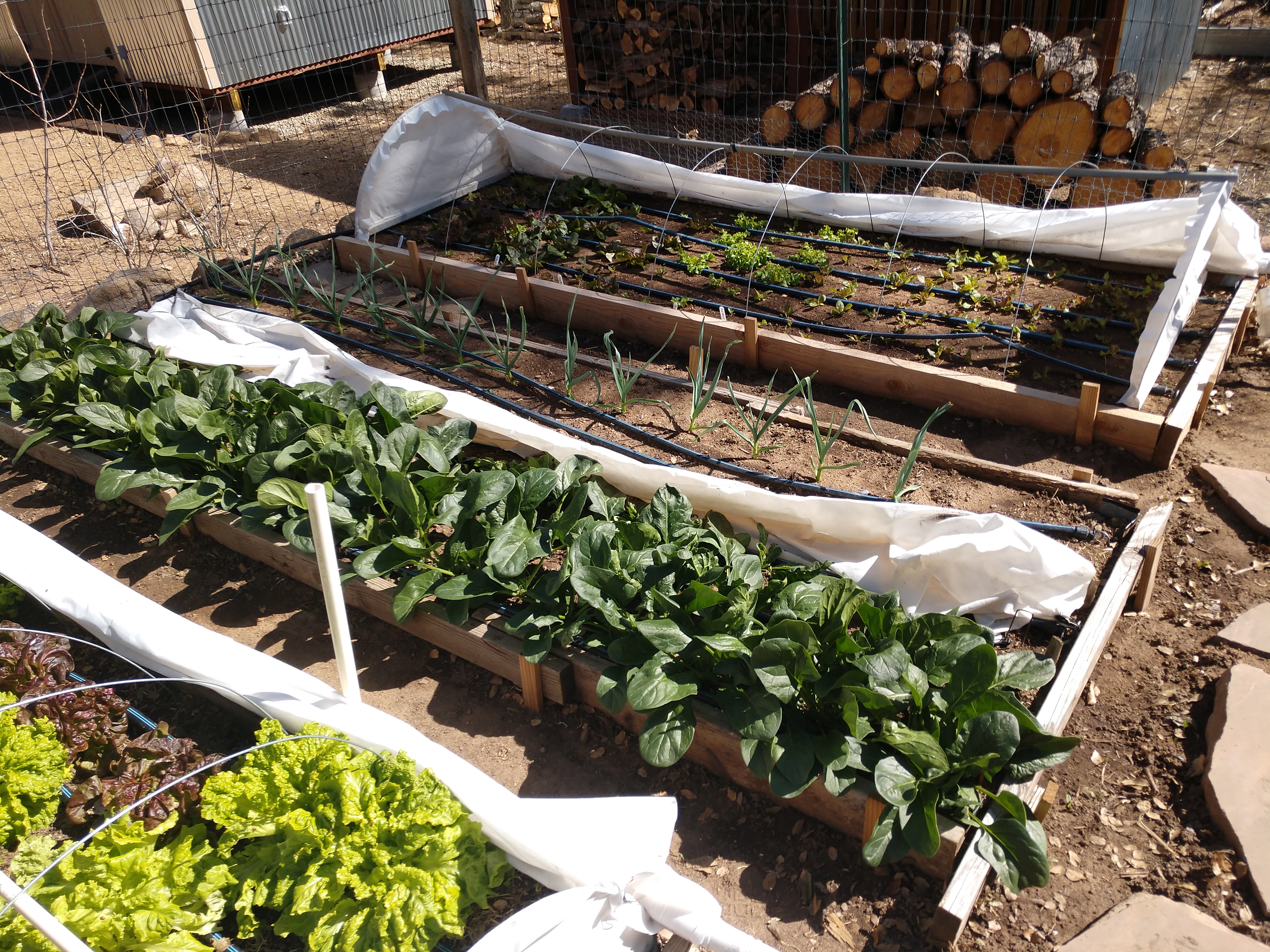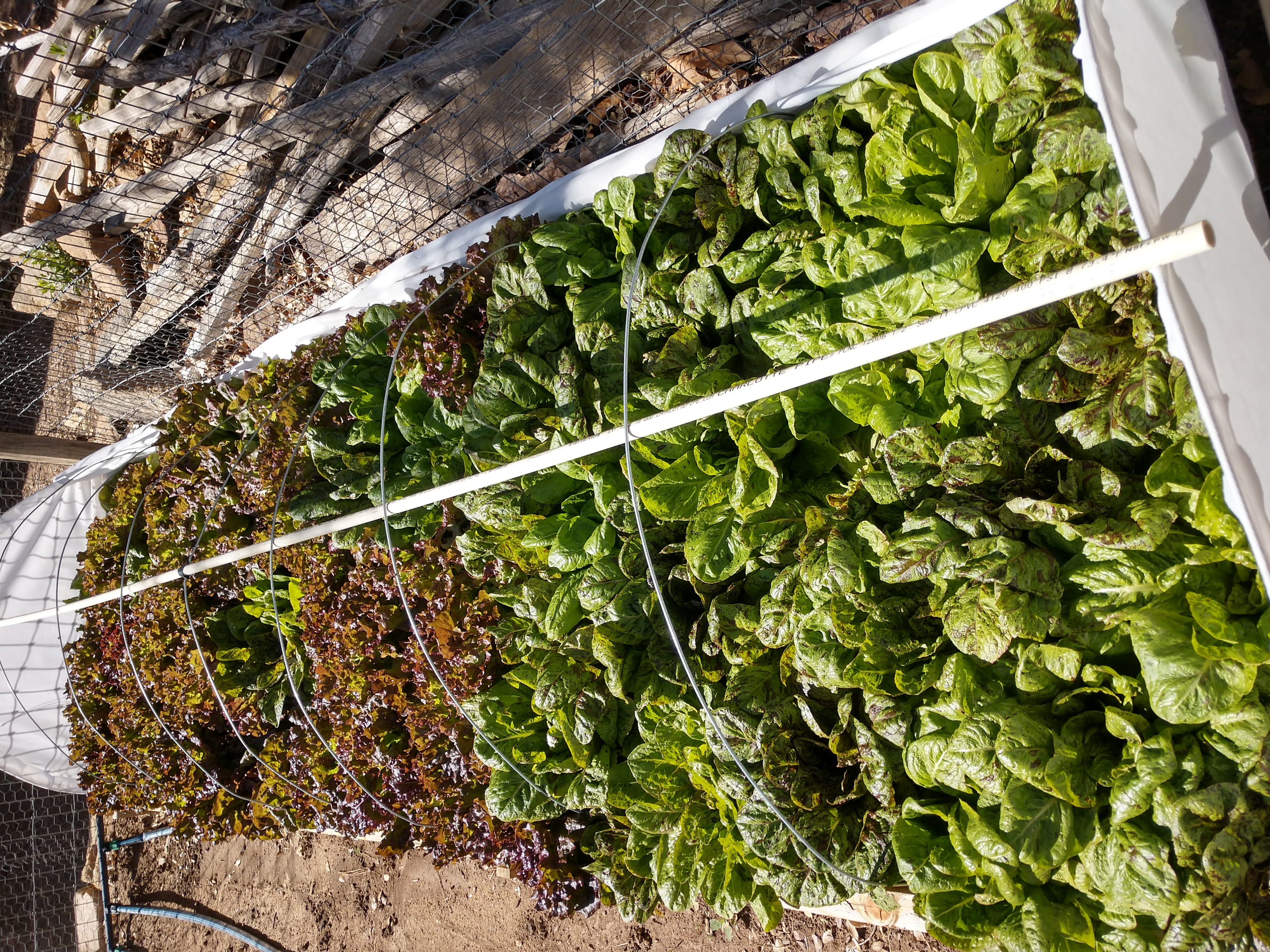 Planning a New Vegetable Garden - April 21, 2021 Jeff Schalau, Agent, Agriculture & Natural Resources University of Arizona Cooperative Extension, Yavapai County One year ago, as COVID-19 was creating a new routine for many people, there was increased interest in home vegetable gardening. It is never too early to start preparing for your garden, especially if you are starting from scratch. In preparation, seeds can be started, compost piles created, but most importantly, selecting and preparing the best possible garden site is key to success. The best vegetable gardening sites are in full sun. However, many garden crops will produce adequately on 6 to 8 hours of full sun per day. Be mindful that shadows will change over the course of the year with the angle of the sun. Avoid planting vegetables in shady places such as on the north sides of buildings or under trees. If weeds are present, then manage them before creating your garden. Prevent annual weeds from going to seed by pulling or hoeing them out prior to flowering. Perennial weeds like bermudagrass and field bindweed are more labor intensive and take a longer period to control. Translocated herbicides, when correctly used, are effective at killing perennial weeds and will not impact subsequent crop growth. However, the weed must be actively growing to achieve effective control. This often requires irrigation and two or three applications during the growing season. I have also seen woven weed barrier used to slow the spread of perennial weeds by creating a physical barrier and limiting light to the weeds. A reliable source of irrigation water is critical to successful vegetable gardening in Arizona. Many Verde Valley properties are irrigated using ditch-delivered water. Non-ditch served properties may require installation of water lines. You must bury your pressurized water main at least 18 inches to prevent freezing. You should always install a backflow preventer to avoid potable water contamination. For year-round use, consider installing a freeze proof yard hydrant. Many home gardeners use a “drip tape” system for irrigation in their gardens. Fencing is another consideration. If you are out on the edge of town where wildlife is present, then you must determine which species you will be trying to exclude. Rabbits, squirrels, gophers, woodrats, deer and javelinas are our most common garden nuisance species. For rabbits and javelina, a sturdy four-foot-tall fence of chain link or woven wire with two feet poultry wire along the base is adequate. Gophers, squirrels and woodrats are difficult to exclude. For gophers, you may consider creating an underground barrier of hardware cloth. This should be at least 2 feet deep. Squirrels and woodrats can climb as well as dig and may require complete enclosure with poultry wire. Deer exclusion often requires an eight-foot-tall fence. A compost area is another good idea when vegetable gardening. It seems there is never enough compost for the garden. Many gardeners prefer compost bins to a simple heap. Bins can be constructed out if concrete block, sheet metal, recycled pallets, or other materials. Composting is an art that you learn over time given the raw materials available to you. The compost area should be near your garden and have water available to keep it moist. Alfalfa cubes have also proven to be an excellent soil amendment for small gardens when compost supplies are limited. I have written about composting and alfalfa as a soil amendment in previous Backyard Gardener columns which are included in the online edition of this column. Avoid areas with extremely rocky or compacted soils. In these situations, consider using raised beds filled with imported topsoil. These can be made of various materials depending on your budget and what you have available. Many gardeners like concrete block walls for raised beds. Rot resistant wood, such as redwood, can also be used. Most vegetable gardeners avoid CCA (chromated copper arsenate) treated lumber or creosote coated railroad ties around edible crops. Corrugated sheet metal with a wooden frame is preferred by many as it lasts a long time and is relatively inexpensive. Starting a vegetable garden from scratch sounds like a lot of work – and it is. However, when the above factors are considered, you will have a convenient, functional vegetable garden space that will serve you for a long time. Visit this column on the Backyard Gardener website for photos and links to additional vegetable gardening information. You can follow the Backyard Gardener on Twitter – use the link on the BYG website. If you have other gardening questions, email the Master Gardener Help Desk in Prescott (prescottmg@gmail.com) or Camp Verde (verdevalleymg@gmail.com) and be sure to include your name, location, and phone number. Find past Backyard Gardener columns or provide feedback at the Backyard Gardener web site: https://cals.arizona.edu/yavapai/anr/hort/byg/. Images  2020 Summer Garden in August showing beets, cucumber, lettuce, green beans, okra, peppers, eggplant, kale, and carrots (going clockwise from the lower left). Tomatoes and summer squash are not visible. Fencing, water supply, trellising, low tunnel, and drip tape (irrigation) are visible too (Photo by Jeff Schalau, University of Arizona).
2020 Summer Garden in August showing beets, cucumber, lettuce, green beans, okra, peppers, eggplant, kale, and carrots (going clockwise from the lower left). Tomatoes and summer squash are not visible. Fencing, water supply, trellising, low tunnel, and drip tape (irrigation) are visible too (Photo by Jeff Schalau, University of Arizona). Alfalfa cubes are available at feed stores in 50 or 80 lb bags. Water them for a couple of days and they break into individual particles which, when tilled into to soil (or top dressed), contain organic matter and all essential plant nutrients. Alfalfa cubes work well when you do not have enough compost. Alfalfa is superior to fresh manure as it will not contain human pathogens such as E. coli or Salmonella (Photo by Jeff Schalau, University of Arizona).
Alfalfa cubes are available at feed stores in 50 or 80 lb bags. Water them for a couple of days and they break into individual particles which, when tilled into to soil (or top dressed), contain organic matter and all essential plant nutrients. Alfalfa cubes work well when you do not have enough compost. Alfalfa is superior to fresh manure as it will not contain human pathogens such as E. coli or Salmonella (Photo by Jeff Schalau, University of Arizona). I use simple low tunnels covered with row cover to protect leafy greens (lettuce and spinach). These are easy to build and use and I have included a link detailing their construction below. The spinach in the center was grown under row cover lying flat on the ground (direct seeded on 12/6/20). The far tunnel has several varieties of lettuce (direct seeded on 2/27/21). This photo was taken on April 9, 2021 (Photo by Jeff Schalau, University of Arizona).
I use simple low tunnels covered with row cover to protect leafy greens (lettuce and spinach). These are easy to build and use and I have included a link detailing their construction below. The spinach in the center was grown under row cover lying flat on the ground (direct seeded on 12/6/20). The far tunnel has several varieties of lettuce (direct seeded on 2/27/21). This photo was taken on April 9, 2021 (Photo by Jeff Schalau, University of Arizona). My other low tunnel is planted with lettuce (direct seeded 10/31/20). In the foreground is a romaine type called 'Flashy Trout Back' and the red leaf type is 'Vulcan'. This photo was also taken on April 9, 2021 (Photo by Jeff Schalau, University of Arizona).
My other low tunnel is planted with lettuce (direct seeded 10/31/20). In the foreground is a romaine type called 'Flashy Trout Back' and the red leaf type is 'Vulcan'. This photo was also taken on April 9, 2021 (Photo by Jeff Schalau, University of Arizona).Additional Resources Ten Steps to a Successful Vegetable Garden, University of Arizona Cooperative Extension extension.arizona.edu/sites/extension.arizona.edu/files/pubs/az1435-2015.pdf Raised Bed Construction, Backyard Gardener, Aprl 8, 2020 cals.arizona.edu/yavapai/anr/hort/byg/archive/raisedbeds2020.html Soil Tips for Raised Beds, Backyard Gardener, April 25, 2018 cals.arizona.edu/yavapai/anr/hort/byg/archive/soilforraisedbeds.html Low Tunnels for Home Gardens, Backyard Gardener, August 19, 2020 cals.arizona.edu/yavapai/anr/hort/byg/archive/lowtunnel.html Low Tunnel Modification for Greater Stability, Yavapai County Master Gardener Facebook Page, March 10, 2021 www.facebook.com/yavapaicountymastergardeners/photos/pcb.3798077543561060/3798065533562261 |